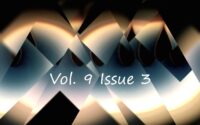Book Review: Vaccine Rhetorics, by Heidi Yoston Lawrence
Vaccine Rhetorics, by Heidi Yoston Lawrence (The Ohio State University Press, 2020), 172 pp.
“I felt the fear and I did it anyway.” -Rachel Maddow, on receiving a Covid-19 vaccine
In April 2021, one of my favorite journalists, Rachel Maddow, opened her nightly news show on MSNBC by describing that she felt as though “there has been a lot of sort of patronizing, snobby discussion about people who don’t really want to get the vaccine” (Feldman). With a great deal of candor and vulnerability, Maddow goes on to say that even she, herself, had some hesitancy about receiving a Covid-19 vaccine. Nevertheless, she “felt the fear and did it anyway.” Written prior to the Covid-19 pandemic, Heidi Yoston Lawrence introduces her monograph, Vaccine Rhetorics, with a similarly candid and vulnerable personal story about refusing the rotavirus vaccine booster for her son. She then goes on to make an astoundingly prescient claim: “Even the most ardent supporter of vaccination might one day be faced with a new requirement that comes with a new risk that might demand a reconsideration of support” (xiv).
This spectrum of vaccine positionality embodied by Maddow’s and Lawrence’s personal stories mirror some of my own internal dialogue about the so-called “warp speed” with which Covid-19 vaccines have been developed. When the possibility of being vaccinated for Covid-19 emerged, I found myself wondering if I trusted the leadership under which this vaccine had emerged. But would I be labelled an anti-vaxxer if I decided to delay receiving a vaccine until one had received full FDA approval? Instead of demonizing such crises of conscience, Lawrence makes the case that what’s needed now is a “rhetorical approach to vaccination.” Vaccine Rhetorics’ rhetorical approach places vaccine-related positionality on a spectrum—a spectrum that is sensitive to “social cultural, and embodied experience[s]” (xiv). To those experiences, we might also now add “political.”
It’s entirely possible that readers of this review are tired of the politics around vaccine mandates akin to the one some of our institutions are recently requiring for students, staff, and faculty. But one need not be invested in the latest false binaries circulating in the general public in order to learn something from reading Vaccine Rhetorics. In fact, because I think contemporary events concerning vaccination have outpaced some of Vaccine Rhetorics’ arguments, I think this book’s strongest contribution is what it does for rhetorical studies as a discipline, itself. Said simply: the research reported in Vaccine Rhetorics illustrates rhetoric’s importance to matters of enormous social consequence. In place of “compliance or infraction” logics, Lawrence’s approach highlights how important it is to facilitate, if not stage, measured “opportunities for persuasion, collaboration, or deliberation” (2). Toward that end, Lawrence draws on new materialism to reframe the vaccine as a “collective, material piece of equipment” (7) that is entangled with a host of “material exigencies that constrain discourse” (117). By the end of Vaccine Rhetorics, readers are offered an enormously helpful roadmap for what it might look like to enact a rhetorical approach to vaccination that resists an “us versus them” mentality.
Most applicable to contemporary vaccination debates is the book’s four rhetorical exigencies for why the vaccine controversy is so intractable. According to Lawrence, attending to these four rhetorical exigencies, which include “disease, eradication, injury, and the unknown” (17), should enable “a radical form of understanding” (18). Admittedly, it is difficult to imagine any type of understanding, let alone a “radical” one emerging around the present Covid-19 vaccination controversy any time soon. Yet, Vaccine Rhetorics gives readers a vocabulary for helping to create the conditions for such a goal.
For example, the first chapter of Vaccine Rhetorics, “Doing Disease,” introduces readers to the notion of “ontologizing” disease. Here, Lawrence is drawing on Mol’s work in The Body Multiple (in addition to S. Scott Graham’s “praxiographic” method) in order to make a case for examining complex, material-discursive phenomena at the actual site of practice. For Lawrence, discursive moves around controversies are part of what structure material practices. Accordingly, this chapter describes “physician discourses” around vaccination practices “through the lens of materiality” (26). Although Lawrence does not conduct real-time observations of physicians as they frame for patients the affordances and constraints associated with receiving vaccines, Lawrence draws on a rich set of interview transcripts to better understand how those with specialized expertise negotiate such fraught, rhetorical situations. Above and beyond the value of the chapter’s key findings, qualitative researchers who wonder how to plan semi-structured interviews with participants who possess specialized knowledge about a complex issue might find the list of interview questions in Table 1 especially helpful (see 35).
By analyzing media reports about the 2014 measles outbreak at Disneyland, chapter two expands in scope to address “the goal of eradication (wherein even one case of a disease is unacceptable)” (20). To prepare readers for her findings, Lawrence introduces what she and Grant et al. call “medico-legal rhetorics,” which are “arguments in the space between medicine, science, and the law” that “work together to regulate, define, and reify normative ways for constructing and legislating bodies, what they do, how they behave, and how they respond to interventions” (51). Relevant to vaccination practices, medico-legal rhetorics help to “stabilize important definitions, concepts, and experiences” (57), especially as they structure both disease eradication and vaccine exemption. Chapters three and four zoom in specifically on vaccine discourses that circulate among parents and patients—particularly in online spaces (chapter three), and for the ways vaccines present a host of uncertainties for potential recipients (chapter four).
Chapter three presents the results of a fascinating analysis of what Lawrence terms “vaccine injury confessionals,” which are “first-hand accounts” of what participants see as harm done to them as a result of vaccination (77). Here, “injury,” which can be witnessed corporeally, becomes yet another persuasive actor in the larger rhetorical problem that is vaccination discord. Lawrence puts Perelman & Olbrechts-Tyteca’s notion of “rhetorical presence” to work in this chapter, as the “before-and-after” genre mobilized in vaccine injury confessionals present compelling evidence of the “real, physical toll of vaccines” on “children and families” (91).
Chapter four goes on to examine how the threat of that which is “unknown” further complicates the possibility of finding common ground within vaccine controversies. I’ve seen the rhetorical power of the unknown play out in contemporary Covid-19 vaccination discord when friends or family members argue that they’d rather trust their own immune system to fight off a disease than expose themselves to the “unknown” that is the Covid-19 vaccine. To substantiate how salient the unknown is in such situations, Lawrence draws on S. Scott Graham’s notion of “constitutive calibration” (103) while examining discourses around the 2018 flu vaccine (n=13, all of whom were college undergraduates). Based on analyses presented in chapters one through four, Lawrence concludes that we need “new methods for communication, discursive intervention, and research in rhetoric” if we have any hope of intervening “in such intractable public problems” (117).
Rather than concluding Vaccine Rhetorics with the typified genre move—“more research is needed”—Lawrence offers a practical roadmap for researchers to follow should they decide to carry forward some of the book’s findings. Specifically, chapter five’s research roadmap invites rhetoric researchers to do as follows: (1) investigate how practitioners persuade patients during clinical encounters, (2) trace the connection between geographical location and residents’ beliefs about vaccination, (3) make long-term commitments to “bringing people in,” and (4) attune to health beyond an ethnocentric focus on the United States (125-126). Readers who are new to rhetoric research (especially researchers in rhetorics of health and medicine), and even seasoned researchers who are looking to embark on a new project, may consult each of these four “primary programs of study” described on pages 125-128 as they sketch out a research plan, grant proposal, and/or Institutional Review Board protocol. Such future studies might also attend more explicitly to the ways power and privilege (especially as they intersect with race, class, gender, and religion) foreground the rhetorical exigencies outlined in Vaccine Rhetorics.
At the time that I revise this for publication, I’m staring down the start of a new semester at The Ohio State University, where tens of thousands of students will gather in classrooms across campus despite the threat posed by SARS-CoV-2’s Delta variant. And by the time you read this, it’s likely another variant or even a new deadly virus will be circulating. Bodies are, indeed, in perpetual flux. Such is the case when it comes to rhetorical analyses of the material conditions that structure public health. In addition to being “intractable,” controversies such as the one examined in Vaccine Rhetorics are in a constant state of unfolding over time. Provided that she’s granted the institutional support she needs to do so, I hope Lawrence extends this project in ways that respond to the nuances of our contemporary Covid moment.
From Hermagoras and Hermogenes’ stases to Stephen Toulmin’s model for argumentation, rhetoricians continue to develop a vocabulary for mining material-discursive complexity. A lot of the time we get it wrong, a lot more than we get it right (cf. Johnson, et al., in press). Nevertheless, rhetoricians are asked to “feel the fear” and “do it anyway.” That’s no small task, especially when much of the country yells back, “Fuck your feelings.” Lawrence’s Vaccine Rhetorics provides a helpful model for what it looks like to write about matters of tremendous importance even when the ideologies and evidence that circulate around such matters refuse to hold still long enough for us to get a handle on what’s going on. I applaud Vaccine Rhetorics for the way it steps into fraught subject matter terrain and makes rhetorical theory “do things in the world” (Helmreich 160).
Works Cited
Feldman, Josh. “Rachel Maddow Makes Impassioned Personal Appeal to People Hesitant about Vaccines: ‘I Felt the Fear and I Did It Anyway.'” Mediaite, 09 April 2021, https://www.mediaite.com/tv/rachel-maddow-makes-impassioned-personal-appeal-to-people-hesitant-about-vaccines-i-felt-the-fear-and-i-did-it-anyway/.
Graham, S. Scott. The Politics of Pain Medicine: A Rhetorical-Ontological Inquiry. U of Chicago P, 2015.
Grant, L., et al. “Medicolegal Rhetorics: Medicine as Arbitrator in Competing Discourses about Disease and Disability.” Rhetoric Society of America Conference, 29 May 2016, Atlanta, GA. Conference Panel.
Helmreich, Stefan, et al. “Doing Theory: Life, Ethics, and Force.” Theory & Event, vol. 24, no. 1, 2021, pp. 158-91.
Johnson, Gavin P., et al. “Responding to the Investigative Pivots of Rhetoric Research.” Rhetoric Society Quarterly, vol. 51, no. 5, 2021, pp. 407-21.
Mol, Annemarie. The Body Multiple: Ontology in Medical Practice. Duke UP, 2003.
COVER IMAGE CREDIT: The Ohio State University Press
KEYWORDS: health; medical rhetoric; politics; pandemic; vaccine





 At Ohio State University, Christa Teston, Ph.D. is the Andrea Lunsford Designated Associate Professor in Rhetoric, Composition, and Literacy in the Department of English. Teston mobilizes multiple methods to study how people navigate uncertainty in technoscientific and biomedical contexts. Her first book, Bodies in Flux: Scientific Methods for Negotiating Medical Uncertainty, was published by University of Chicago Press in 2017 and won two national best book awards. Currently under contract with Johns Hopkins University Press is her next book, Doing Dignity: Ethical Praxis and the Politics of Care, which draws on analyses of three case studies about how in/dignities emerge in caretaking contexts. Teston also directs Ohio State University’s business, professional, and technical writing courses and is Vice Chair of the Rhetoric, Composition, and Literacy Program.
At Ohio State University, Christa Teston, Ph.D. is the Andrea Lunsford Designated Associate Professor in Rhetoric, Composition, and Literacy in the Department of English. Teston mobilizes multiple methods to study how people navigate uncertainty in technoscientific and biomedical contexts. Her first book, Bodies in Flux: Scientific Methods for Negotiating Medical Uncertainty, was published by University of Chicago Press in 2017 and won two national best book awards. Currently under contract with Johns Hopkins University Press is her next book, Doing Dignity: Ethical Praxis and the Politics of Care, which draws on analyses of three case studies about how in/dignities emerge in caretaking contexts. Teston also directs Ohio State University’s business, professional, and technical writing courses and is Vice Chair of the Rhetoric, Composition, and Literacy Program.